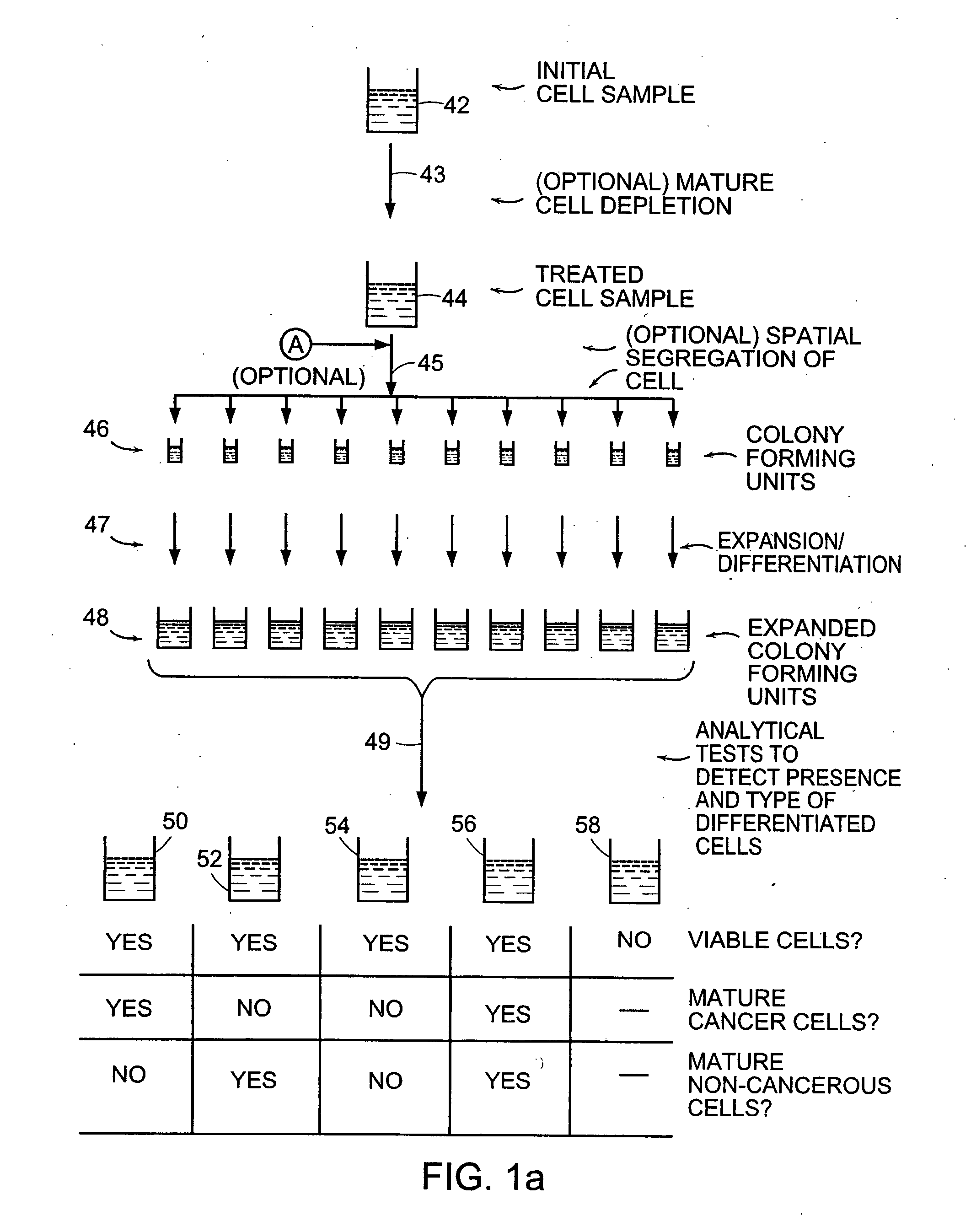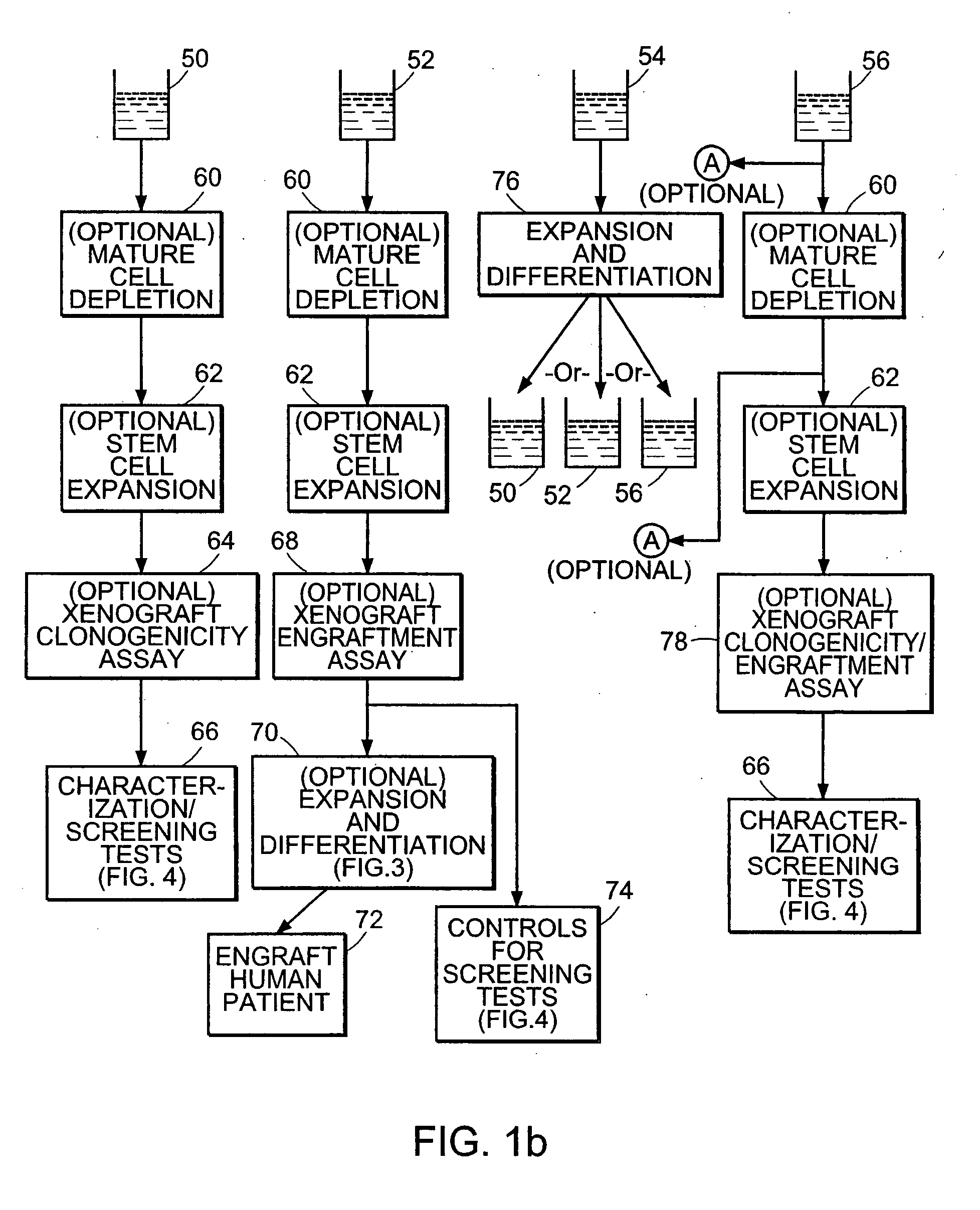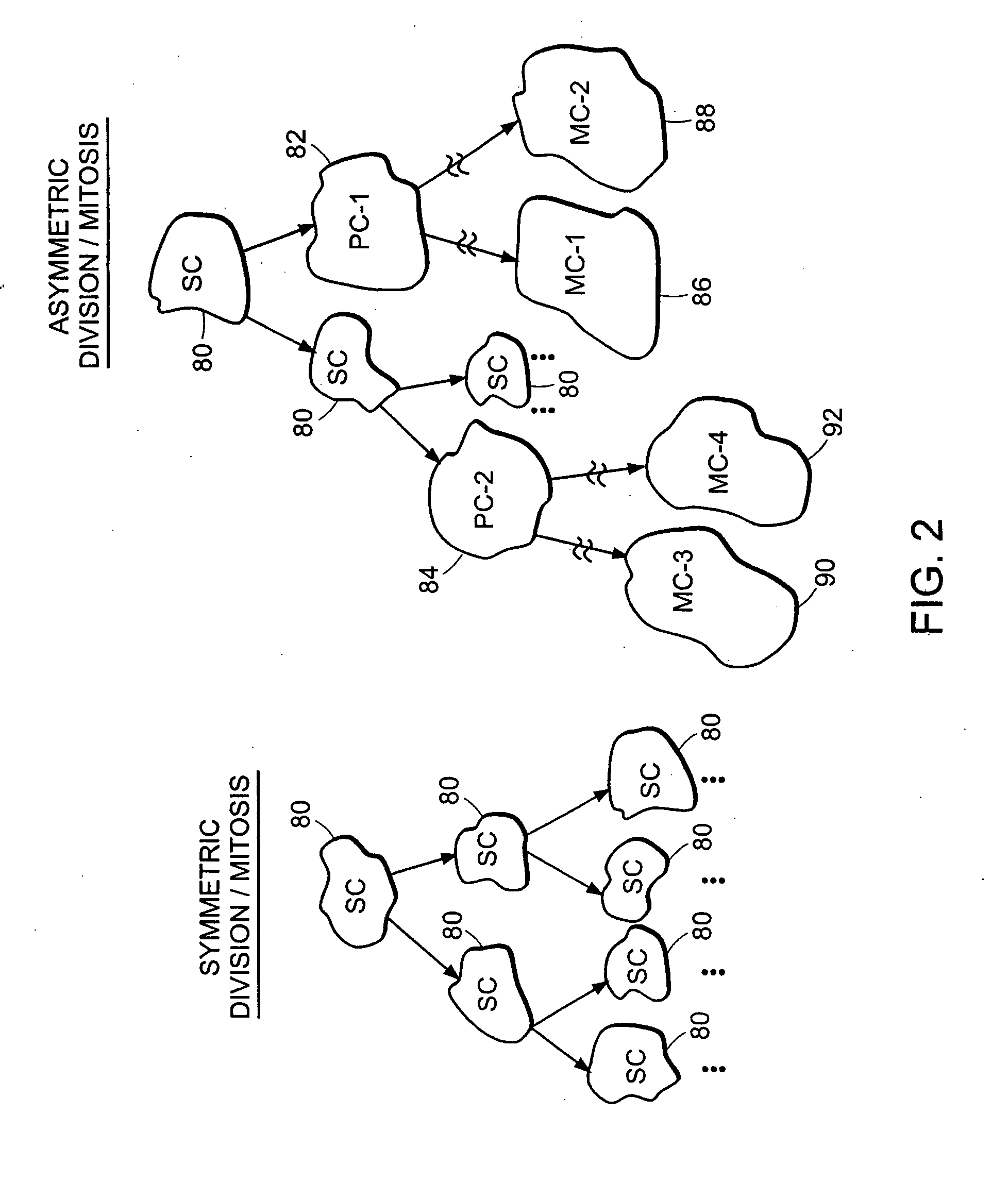Strategies for the identification and isolation of cancer stem cells and non-cancerous stem cells
a technology of stem cells and cancer, applied in the field of cancer stem cells identification and/or stem cell isolation, can solve the problems of unresolved problems, inconsistent trials of such currently available treatments, and poor overall survival statistics
- Summary
- Abstract
- Description
- Claims
- Application Information
AI Technical Summary
Benefits of technology
Problems solved by technology
Method used
Image
Examples
example 2
Cancer Stem Cell Isolation from a Sample Containing Both Cancer Stem Cells and Non-Cancerous Stem Cells
[0124] A portion of the stem cell-enriched sample obtained as in Example 1 as a result of performing mature cell depletion via electric field exposure is utilized in the present example to isolate a suspension including cancer stem cells but being substantially free of non-cancerous cells, including non-cancerous stem cells.
[0125] The purified stem cell suspension is utilized to prepare a plurality of colony forming assays by plating serial dilutions of the cell suspension in separate culture plates in a semi-solid methylcelluose-containing culture substrate similar to that described in Bonnet and Dick. Cultures are incubated in an appropriate media including a concentration of cell lysate, produced as in Example 1, being present in the culture at a concentration determined in Example 1 to preferentially favor asymmetric mitosis of stem cells.
[0126] The cultures are incubated un...
example 3
Bone Marrow Transplantation of Cancer Stem Cell-Free Hematopoietic Stem Cells
[0128] The hematopoietic stem cell-containing sample of Example 2 found to be substantially free of cancer cells is utilized in the present example for reconstituting the bone marrow of the patient described in Example 1 from whom the initial cell sample is derived. It should be understood that the patient, subsequent to cell harvest, will have undergone high dose chemotherapy, radiation, or other marrow-ablating treatment such that the patient is in need of hematopoietic reconstitution.
[0129] The sample is expanded in vitro to increase the total number stem cells contained in the sample to prepare for engraftment. At least a portion of the sample undergoing expansion is expanded in culture media containing a concentration of the lysate from Example 1 present within the range found to preferentially favor asymmetric division of the stem cells. Optionally, a portion of the expanded cultures are utilized in...
example 4
Chemotherapeutic Drug Screening with Purified Cancer Stem Cells
[0131] In this example, the isolated stem cell sample produced according to Example 2 that was found to contain cancer stem cells but was found to be substantially free of mature non-cancerous cells is utilized to screen the effectiveness of chemotherapeutic agents against cancer stem cells.
[0132] The cancer stem cell containing sample is first subjected to electric field conditions selected to inactivate the mature cancer cells present in the sample while leaving substantially viable the cancer stem cells. The conditions utilized are substantially similar to those described above in Example 1. This treated cell sample containing purified cancer stem cells is then exposed to the chemotherapeutic agents in concentrations and under conditions significant with respect to the proposed use of these compounds in vivo. The treated sample is then expanded in vitro with cell lysate as produced in Example 1 included in the cultu...
PUM
| Property | Measurement | Unit |
|---|---|---|
| volume | aaaaa | aaaaa |
| morphology | aaaaa | aaaaa |
| electric field | aaaaa | aaaaa |
Abstract
Description
Claims
Application Information
 Login to View More
Login to View More - R&D
- Intellectual Property
- Life Sciences
- Materials
- Tech Scout
- Unparalleled Data Quality
- Higher Quality Content
- 60% Fewer Hallucinations
Browse by: Latest US Patents, China's latest patents, Technical Efficacy Thesaurus, Application Domain, Technology Topic, Popular Technical Reports.
© 2025 PatSnap. All rights reserved.Legal|Privacy policy|Modern Slavery Act Transparency Statement|Sitemap|About US| Contact US: help@patsnap.com



